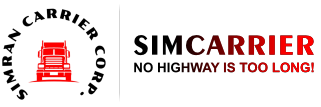Truckload transport involves moving large volumes of cargo that occupy the entire trailer or truckload and are dedicated to a single customer. There are three main types of Truckload (TL) transport: dry van, flatbed, and refrigerated.
A standard truck can accommodate up to 30 standard pallets (40”x48”). Many full loads do not maximize this capacity but are instead measured by the number of pallets. For instance, if you have 15 pallets, each weighing 2600 lbs, your load meets the weight criteria based on pallet count rather than overall weight. The transport typically involves direct transportation from pickup to delivery without intermediate stops.
Different Kinds of Truckload
- Dry Van: This is for truckload freight with no temperature-specific care requirements. These are the most common used vans.
- Refrigerated: These are used for materials that need to be transported in a temperature-controlled environment. This is best for food-grade products.
- Flatbed: These are open vans, often used for large pieces of equipment including machinery and construction materials.
Benefits of Full Truckload
- Less Damage: There is less loading and unloading meaning there is less chance of damage to the cargo.
- Cheaper Rates: Instead of multiple small shipments, you are paying for one large shipments.
- Faster Transit Times: As there is only one stop, the freight gets to its end location quicker.
Unlike in LTL, Truckload freight can be loaded by your team’s requirements. While LTL freight almost always must be in skid, for full truckload its up to you. You can ship freight in skid, or loose if that is easier for your customer at receiving. The entire truck is yours giving you more freedom.
What Determines Rate
- Mileage
- Fuel Costs
- Season—during some seasons, certain lane’s pricing increases
- Dry van or Refrigerated—refrigerated vans are less common making them more expensive

